When the King Came to Ocala
by Tom Petty as told to Paul Zollo

My dad’s name was Earl. My grandmother on my mother’s side’s ex-husband’s name was Earl. My mother’s sister married two guys named Earl. First husband named Earl, no good; then she married another guy named Earl. And my middle name is Earl.
My grandmother would not say the name Earl. She thought it was some kind of jinx. She called my dad “Petty.” And my uncle, they called him Jernigan, ’cause his name was Earl Jernigan. And she referred to him as Jernigan and my dad as Petty, because her ex had been named Earl. She didn’t like my father at all, because he was a wild, gambling drinker guy. And her other daughter had two husbands named Earl. Earl Jernigan was a very interesting guy. He wasn’t a Southerner. He was the only Northerner in the family. And his love was film, motion pictures. And he had the only business in town that was a film business. He had the only place where you could develop film or buy it.
And anytime there was a movie shoot, probably within a hundred miles, he would go. And they did quite a bit in this place called Silver Springs in Ocala, because the water is crystal clear and the glass-bottom boat originated there. You could ride and look at the fish through the glass bottom of the boat. And they had these big windows that you could film through. He worked on several big-time movie shoots. They would contract him to do whatever he did. He was a trip. He didn’t like my family much, because they had nothing in common. He was actually far too hip to hang around with the Pettys. At the time, I didn’t understand why he never wanted to be around. I understand it clearly now.
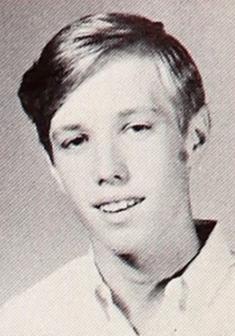
He had done Return Of The Creature From The Black Lagoon, and he actually had one of the rubber suits of the creature in his house, and we thought that was so cool.
I was eleven years old. I was sitting in a pile of pine straw, underneath a big pine tree in my yard. And I was thinking, ‘What am I going to do today?’ Just kind of sitting there. Just old enough, at eleven, to kind of wonder what might lie ahead. And my Aunt Evelyn pulled into the driveway; her husband was Earl Jernigan.
She says, “Tommy, would you like to go and see Elvis Presley?”
I didn’t know a lot about Elvis Presley. He was known to me as a fellow who wiggled. But I couldn’t really put together in my head who Elvis was exactly. I knew he was a rock’n’roll star. And I’d never thought much about rock’n’roll until that moment.
I thought, “Yeah, sure.”
So it was going to be in about a week’s time. We were going to go see Elvis. My uncle had been hired onto this film that he was shooting, called Follow That Dream. I’ve always thought was a cosmic title.
My aunt picked me up with my two cousins and drove us to Ocala, which was about thirty miles away. And there was a huge crowd when we got there, the biggest crowd I’ve ever seen in the streets of Ocala. And we were driven through the crowd and around the back and into the film set. They were filming on the street, in a scene where Elvis pulled up in a car and walked into a bank. A simple scene. So they had set up a bunch of trailers with a chain-link fence around it for a dressing room. And we were taken back to the dressing room area. And then, I swear to God, a line of white Cadillacs pulled in. And I’d never seen anything like that. It wasn’t a funeral. They were all white. Cadillacs. And I was standing up on a box to see over everyone’s head. Because a big roar started up when the cars pulled in. And then guys in mohair suits and pompadours started jumping out of every car. And I said, to my aunt, “Is that Elvis?”
She said, “No, that’s not Elvis.”
Then the next one came out, and I said, “Is that Elvis?”
“No, that’s not Elvis.”
And then suddenly I go, “That’s Elvis.” He stepped out, radiant as an angel. He seemed to glow and walk above the ground. It was like nothing I’d ever seen in my life. At fifty yards, we were stunned by what this guy looked like. And he came walking right toward us. And his hair was so black, I remember that it shined blue when the sunlight hit it.
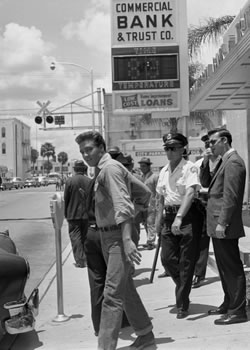
And he walked over and we were speechless. My uncle said, “These are my nieces and nephews, Elvis.” And he smiled and nodded at us. I don’t know what he said, because I was just too dumbfounded. And he went into his trailer. And then we got really excited. Like that first brush with fame will do to you. By now, hundreds of girls were against this chain-link fence. And there were just photos of Elvis and albums everywhere you looked in their hands, and they we trying to get Elvis to sign this stuff. And one of his Memphis mafia guys was there. They were handing the record jackets over the fence, and he would take them into the trailer and come back with them signed, and give them to the kids.
So being young, the way I put this together in my head, was, “Damn, if I had record jacket, I could get an autograph.” It hadn’t occurred to me that he could have just signed any piece of paper. I wanted a proper thing.
So we stayed around the rest of the day, and we watched him shoot this scene — which was really funny, because every time he pulled up in the car, the crowd would break through the barricades and just charge him. So it took them hour just to shoot this little scene of him getting out of the car and walking in the door, because they couldn’t control the crowd; they were just insane. And I thought at that time, “That is one hell of a job to have. That’s a great gig—Elvis Presley.”
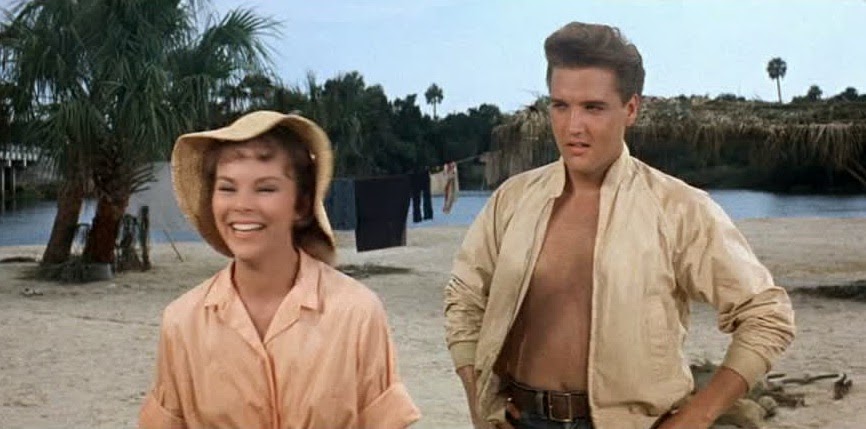
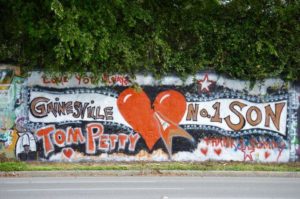
And then my aunt said she would bring us back again. And so I made up my mind that if I was going back again, I’m going to have an Elvis record for him to sign. And I caught the fever that day and I never got rid of it. I began collecting anything I could find on Elvis. There was a guy down the street who had a sister who had gone to college and was older than us. This was 1961 or 1962; Elvis’ heyday had kind of passed. I traded my Wham-O slingshot to this kid for a box of 45s, and in this box there were so many Elvis records, and they were all the greatest ones. And there were a few others, like Ricky Nelson and Jerry Lee Lewis. And some stuff in there that was great, too. But it was the Elvis stuff I was really interested in.
There were no books of any kind on Elvis, no information anywhere. The only place you could get information on him were teen magazines, but there was very little information in those. Then I found one that had an ad in the back, where you could send away for something called The Elvis Presley Handbook. I’m eleven years old, in fifth grade, and I’m completely enthralled with Elvis Presley. None of my friends could relate at all to Elvis Presley. But I thought it was cool, and I thought rock ‘n’ roll was cool, and I just loved the music. I played it endlessly. My dad was concerned that I didn’t go outside, that I just played these records all day. I wasn’t thinking of being a musician. I was just a fan.
And so I sent a buck to England for this book, The Elvis Presley Handbook, much to the ridicule of my family for wasting a dollar. And it took months to come, but the day it came was like Christmas. The book came, and it had every fact and it had a review of every song he’d done, and the chronology of when the records had been released. And I could see what I had and what I didn’t have. And that’s what kicked off my love of music. That was the dream I followed, strangely enough.
It would be some years later, two to three years later, when The Beatles came, that I would catch the fever and want to play guitar. But learning all of those Elvis songs, and having that kind of background in rock ‘n’ roll of where it had come from, has served me to this day. It became an invaluable thing to have. So for that, I thank him.
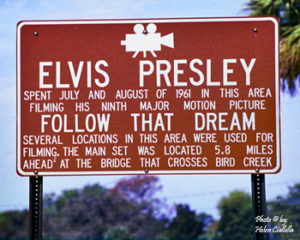
From Homegrown in Florida (University Press of Florida, 2012). Adapted from Conversations with Tom Petty (Omnibus Press, 2007) by Paul Zollo. Reprinted in Gainesville magazine, January 2013
